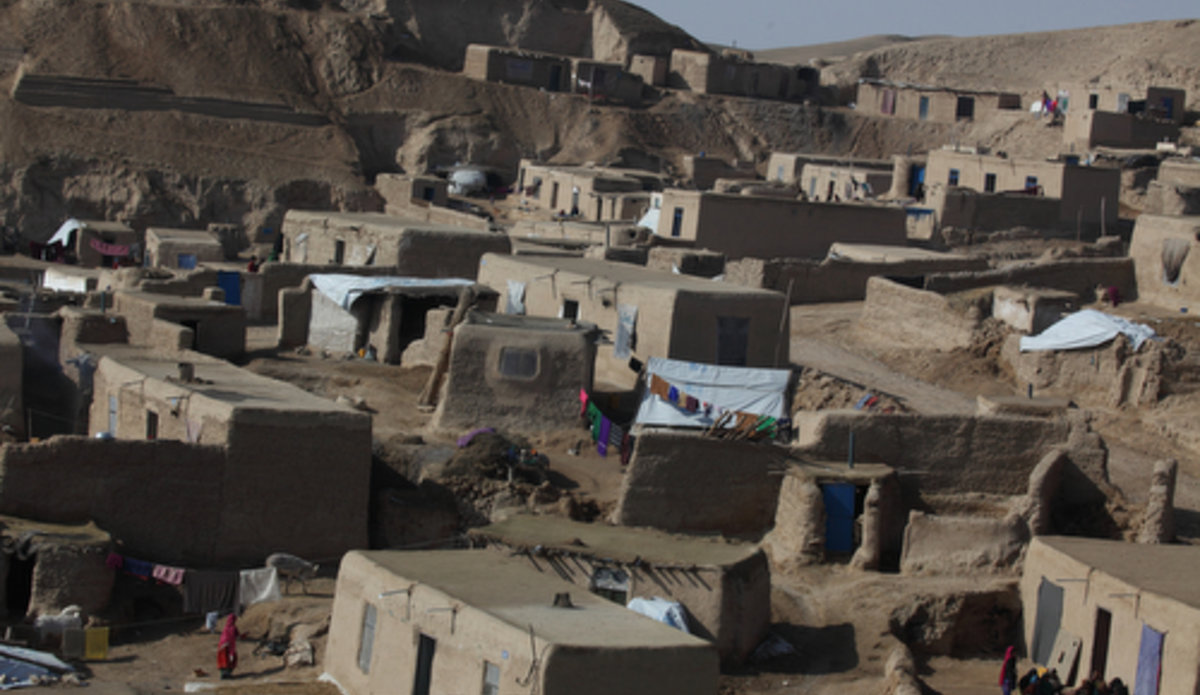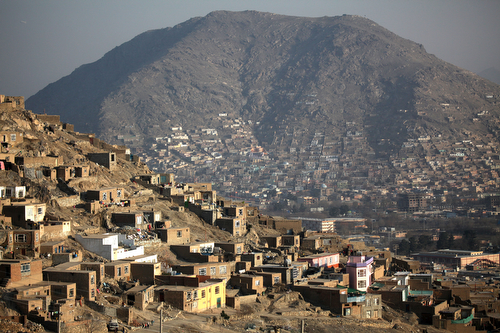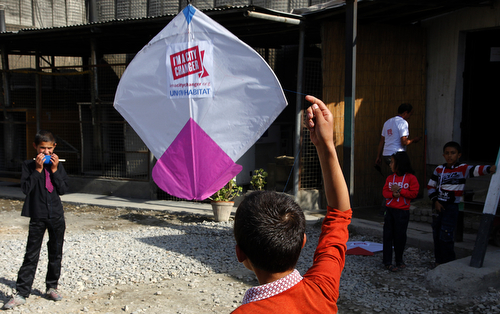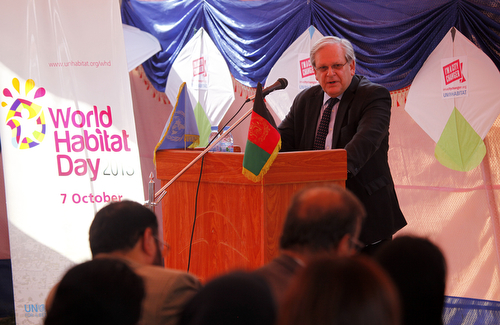On World Habitat Day, UN chief calls for making cities and towns accessible to all
KABUL - Marking World Habitat Day today, the United Nations Secretary General, Ban Ki-moon, has called for making cities and towns more accessible.
"People need to be able to get to work, school, hospitals and places of recreation safely and quickly. Getting mobility right can regenerate urban centres, boost productivity and make a city attractive for all users – from investors to visitors and residents,” Mr. Ban said in his message for the Day.
“Urban transport is a major source of greenhouse gas emissions and a cause of ill-health due to air and noise pollution,” he added. “The traffic congestion created by unsustainable transportation systems is responsible for significant economic and productivity costs for commuters and goods transporters.”
Through a resolution passed in 1985, the UN General Assembly designated the first Monday of October of every year as World Habitat Day. It aims to generate reflection on the state of towns and cities and the basic right of all to adequate shelter. It is also intended to remind the world of the shared responsibility to shape the future of cities and towns.
This year, the United Nations chose the theme ‘Urban Mobility’ because mobility and access to goods and services is essential to the efficient functioning of cities and towns as they expand. Accessible cities encourage a shift towards more sustainable modes of transportation and draw more and more travellers out of cars and onto trains, buses, bike paths, and sidewalks.
According to the UN Human Settlements Programme (UN-HABITAT) – the world body’s agency which promotes socially- and environmentally-sustainable towns and cities with the goal of providing adequate shelter for all – mobility is about more than just the mode of transport which people use. It states that urban planning and design should focus on how to bring people and places together, by creating cities that focus on accessibility, and optimal urban densities, rather than simply increasing the length of urban transport infrastructure.
The challenges involved with urban transport are most pronounced in developing country cities, where approximately 90 per cent of global population growth will occur in the coming decades. These cities are already struggling to meet increasing demand for investment in transportation. They must also face the issue of so-called ‘transport poverty.’ Millions of people are denied the benefits of public or private transport due to cost; persons with disabilities and the elderly are regularly excluded by practicality; and safety is a serious issue for many women, young persons and minorities made vulnerable by faith or ethnicity.
“Mobility is not just a question of building wider or longer roads; it is about providing appropriate and efficient systems that serve the most people in the best, most equitable manner,” Mr. Ban said in his message. “This includes encouraging a transition from car use to trains, buses and bicycles, and bringing more pedestrians onto well-lit sidewalks.”
In Afghanistan, years of conflict and chronic under-investment have had a severe impact on its urban housing stock and the physical infrastructure, UN-HABITAT notes. In the longer-term, there are reasons to believe that, as peace returns to the country, its urban population will increase at a much faster rate than its rural population. According to UN estimates, from 2000 to 2015, the national population is expected to have increased by 14 million to reach a total of about 37 million – more than half of this growth will be in urban areas.
To add to this, Afghanistan is one of the most rapidly urbanising countries in the sub-region. The UN agency states that urbanisation will pose both a challenge to, and an opportunity for, the development of the country.
“The way the current pressures on its urban areas are managed will influence the success of its development endeavours,” UN-HABITAT states on its website.
To mark the Day in Afghanistan, UN-HABITAT’s local office hosted a panel discussion on how policy makers, urban planners and community leaders can make cities more resilient to natural and human-made disasters and conflicts.
Those taking part in the discussion include the Secretary-General’s Deputy Special Representative for Afghanistan, and UN Resident Coordinator, Mark Bowden.
In addition to the panel discussion, UN-HABITAT also showcased a model of its new ‘Green Shelter,’ a settlement which can be constructed at low cost for internally displaced persons, as well as for communities affected by natural disasters and conflict in an environmentally-friendly way.
The ‘Green Shelter’ utilizes environmentally-friendly building materials, passive-solar design, and rainwater harvesting. It is more cost-effective compared with commonly-used shelters in Afghanistan and promotes jobs and improved livelihoods through community implementation.
 UN
UN










